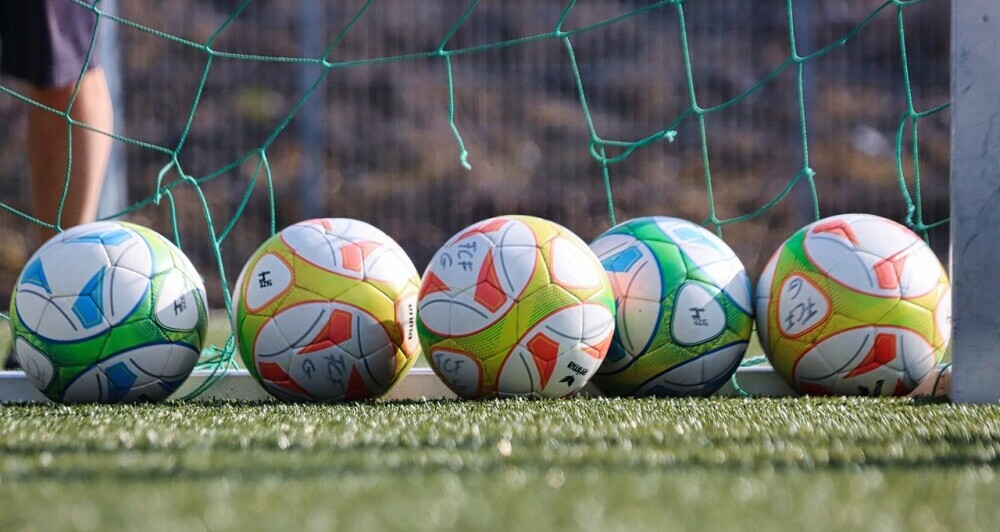 I’m going to walk you through some key exercises that will help you build a strong foundation for improving your soccer skills at home. As you know, every great soccer player didn’t just wake up with incredible skills. It all starts with the basics, the fundamentals that become the building blocks of advanced play. That’s going to include honing your agility, balance, and ball control right in your own space.
I’m going to walk you through some key exercises that will help you build a strong foundation for improving your soccer skills at home. As you know, every great soccer player didn’t just wake up with incredible skills. It all starts with the basics, the fundamentals that become the building blocks of advanced play. That’s going to include honing your agility, balance, and ball control right in your own space.
Now, before you start dribbling or taking shots at an imaginary goal, it’s crucial to get your body ready for the action. Warm-ups and stretching are your best allies in this. I can’t stress enough how they are not just a routine but also a shield against injuries. Incorporating dynamic stretches and light cardio gets your muscles warm and ready for the drills that lie ahead.
You’re going to find out about the importance of touch and control, because that’s what separates the good players from the great ones. Ball-juggling might seem simple, but it’s incredibly effective. Not only does it improve your touch, but it also helps with your overall coordination and ability to adapt to different ball trajectories.
This isn’t just about ball skills, it’s also about building the physical foundation required for soccer. Strong core and leg muscles are paramount, so integrating exercises like planks, squats, and lunges into your routine will pay dividends on the pitch. A stable core helps you maintain balance during quick changes in direction, while powerful legs fuel those explosive runs and jumps.
Choose exercises that resonate with you and fit your current level of play. You can always tweak your routine as you progress. The goal here is to establish a solid base that you can build upon with more specific soccer skills, which is exactly what we’re going to transition into next.
Enhancing Technical Abilities
Dribbling is next on the list. You can create a mini dribbling course with whatever you have—cones, shoes, cans, it doesn’t matter. The point is to practice maneuvering the ball around obstacles, which simulates evading defenders. Challenge yourself by reducing the space between obstacles as you get better.
Now, let’s talk about shooting, which you can definitely work on even in a smaller area. Set up a target in your backyard or against a wall and practice hitting it with different parts of your foot. Focus on both, the power behind your shots and your ability to control the direction precisely.
Remember, repetition is key. Your first attempt doesn’t need to be your last, and perfection isn’t the goal here—progress is. You can always adjust your approach down the road as you improve.
Section 3: Tactical Training and Cognitive Development
So you’ve been working hard on your technical skills, and that’s fantastic. But if you want to elevate your game, you’re going to need to sharpen your soccer brain too. The tactical aspect of soccer is what separates good players from great ones. It’s not just about how you move the ball; it’s also about how you move yourself.
First up, let’s talk about understanding space and movement off the ball. In soccer, what you do when you don’t have the ball is crucial. It’s about positioning yourself in a way that makes you available for a pass, or moving to a spot that opens up space for a teammate. For this, you can use visualizations and mock scenarios to practice positioning. Imagine the movement of other players on the field and determine where you would need to be to support them.
Moving on, decision-making drills are going to take center stage. These drills are about speed—not just the physical kind, but the mental kind too. Set up situations for yourself where you have to make quick decisions. For example, if you’ve got a rebound net or a wall, pass the ball against it and decide in advance whether you’re going to control the ball, pass it, or shoot it when it comes back to you. Change it up frequently to keep yourself guessing.
And then there’s the learning from the best. Spend some time watching professional matches, not as a fan, but as a student. Pay close attention to the positions players take up when they are off the ball and how they react when the situation changes. Try to understand the strategies being applied by different teams.
Now, as you’re working through these cognitive drills, you’re going to find out about personal weaknesses and areas to improve. This is good! It’ll provide focus for your next training sessions. And remember, your first attempt at these drills doesn’t need to be flawless. You can always adjust your approach down the sort of aspirational goal should motivate, not intimidate.
Consistency and Motivation
You’re going to find out about the necessity of regular practice and staying inspired as you improve your soccer skills. Consistency isn’t just about repetitive drills; it’s about creating a training schedule and sticking to it.
I’m here to help you with setting achievable targets. It’s crucial to set small, measurable goals and gradually increase the difficulty of your drills. This will help you see tangible progress and avoid getting stuck in a rut.
If you want to stay on track, consider keeping a log of your training. Note the exercises you do, the number of repetitions, and any improvements you notice. This isn’t just rewarding, but also a practical way to evaluate your methods and progress.
Don’t worry too much about hitting a plateau. It happens to everyone. The key is to keep adjusting your approach and introducing new drills to challenge yourself in different ways.
Choose something that resonates with you, whether that’s practicing to your favorite music, imagining yourself in a big game, or rewarding yourself when you reach your goals. Personalizing your training makes it more enjoyable and sustainable.
Motivation can waver, but tapping into a community of soccer enthusiasts can greatly help. Join online forums, participate in virtual challenges, or share your progress on social media. Engaging with others offers encouragement and keeps the fun element alive.
I really hope that you incorporate these strategies into your at-home training routine. They’re designed to help you not only improve your soccer skills but also enjoy the journey. A lot is happening very quickly once you’re in the swing of consistent practice and lively participation within the soccer community.

